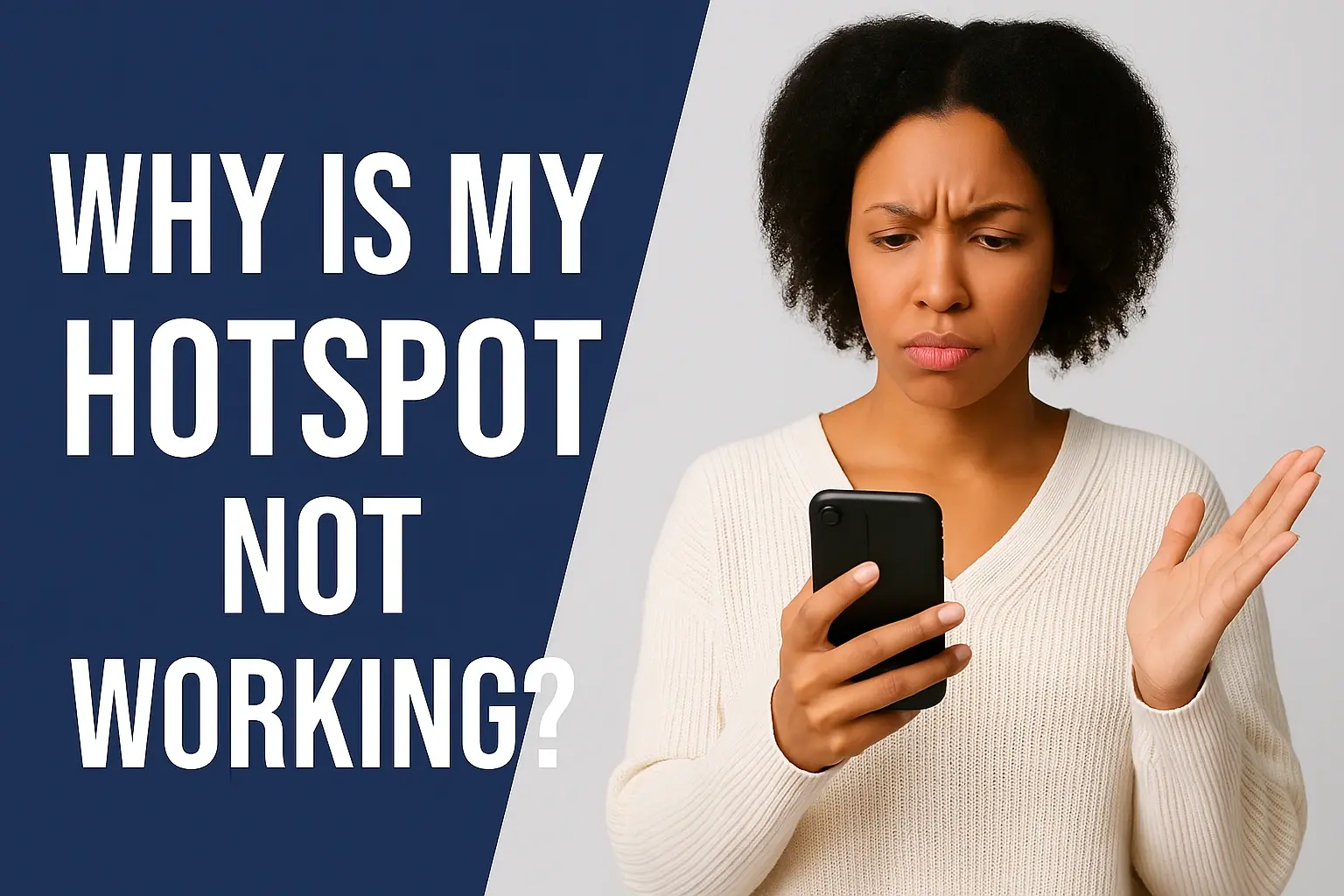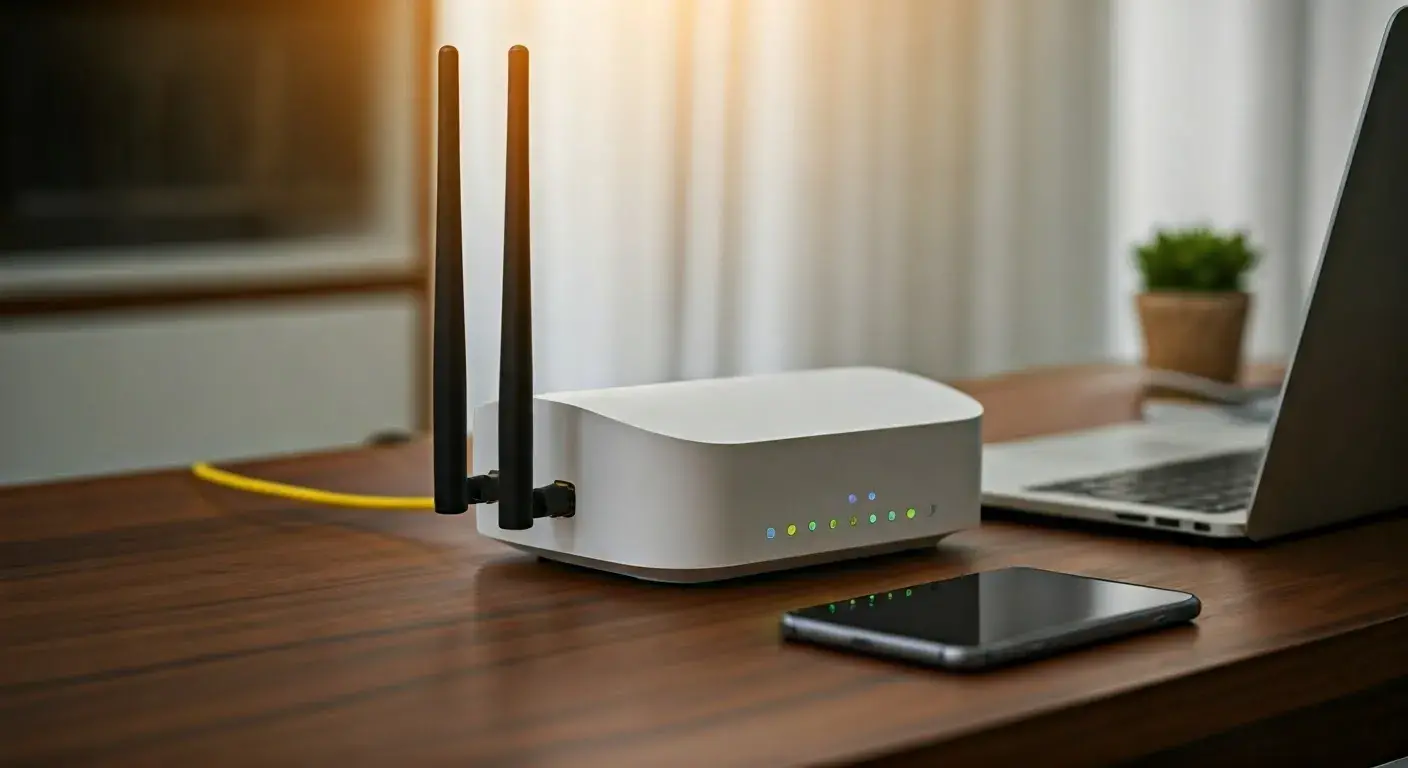How do I track my wife's phone GPS?

Exploring methods to track a wife's phone GPS requires a nuanced approach, balancing technological capabilities with ethical considerations. This guide delves into legitimate, privacy-respecting solutions for locating a mobile device, offering insights for concerned partners seeking peace of mind in 2025.
Understanding GPS Tracking Technology
Global Positioning System (GPS) technology, initially developed for military applications, has become ubiquitous in modern life. At its core, GPS relies on a network of satellites orbiting Earth. A GPS receiver, such as the one found in a smartphone, triangulates its position by calculating the distance from at least four of these satellites. This process allows for remarkably accurate location data, often within a few meters.
However, when we talk about tracking a phone's GPS, we're usually referring to more than just the raw satellite data. Modern smartphones integrate various location services to enhance accuracy and provide continuous tracking capabilities. These include:
- Assisted GPS (A-GPS): This technology uses cellular network data and Wi-Fi hotspots to help the GPS receiver acquire satellite signals faster and maintain a lock, especially in areas with weak satellite reception.
- Wi-Fi Positioning: Devices can determine their approximate location by scanning for nearby Wi-Fi networks and comparing their identifiers to a database of known Wi-Fi access points and their locations.
- Cell Tower Triangulation: Similar to Wi-Fi positioning, a device's location can be estimated by identifying which cell towers it's connected to and their signal strengths. This method is less precise than GPS or Wi-Fi but is useful when other signals are unavailable.
The combination of these technologies allows for a sophisticated system where a device's location can be pinpointed and shared with authorized users or services. Understanding these underlying mechanisms is crucial before delving into the practical methods of tracking a phone's GPS. The accuracy and reliability of tracking depend heavily on the device's capabilities, its settings, and the environmental conditions.
How GPS Works on Smartphones
Smartphones are equipped with specialized GPS chips that constantly communicate with the satellite constellation. When an application requests location data, the GPS chip processes the signals. The operating system (iOS or Android) then aggregates this data, often combining it with information from Wi-Fi and cellular networks, to provide a precise location. This location data can then be accessed by various applications, including those designed for tracking or navigation.
The accuracy of GPS on a smartphone can vary. In open areas with a clear view of the sky, accuracy can be as high as 5-10 meters. However, in urban canyons (areas with tall buildings), indoors, or under dense foliage, the signal can be obstructed, leading to reduced accuracy or even complete loss of signal. This is where A-GPS, Wi-Fi positioning, and cell tower triangulation become vital, offering a more consistent, albeit sometimes less precise, location fix.
Factors Affecting GPS Accuracy
Several factors can influence the accuracy of GPS tracking on a mobile device. It's important to be aware of these to set realistic expectations:
- Environmental Obstructions: Tall buildings, dense forests, tunnels, and even heavy cloud cover can interfere with satellite signals.
- Device Hardware: The quality and sensitivity of the GPS receiver chip in the phone itself play a significant role.
- Software and Settings: The phone's operating system and the specific location services enabled can impact accuracy. For instance, "High Accuracy" modes on Android devices utilize all available location sources, while "Battery Saving" modes might rely more on Wi-Fi and cell towers.
- Time to First Fix (TTFF): The time it takes for the GPS receiver to acquire a satellite lock can vary. "Cold starts" (when the device hasn't acquired a fix recently) take longer than "warm starts."
- Antenna Placement: How the phone is held or positioned can affect its ability to receive satellite signals.
Understanding these factors helps in diagnosing potential issues and choosing the most effective tracking methods available in 2025.
Legitimate and Ethical GPS Tracking Methods
When considering how to track a wife's phone GPS, it's paramount to prioritize methods that are legal, ethical, and consensual. The landscape of digital privacy is constantly evolving, and 2025 regulations emphasize transparency and consent. The most appropriate methods involve open communication and mutual agreement, leveraging built-in device features or reputable third-party applications designed for family safety and location sharing.
It is crucial to distinguish between legitimate tracking for safety and well-being, and unauthorized surveillance, which carries significant legal and ethical ramifications. This guide focuses exclusively on the former, assuming a context of trust and shared responsibility within a relationship. The goal is to provide peace of mind through transparent and agreed-upon methods.
Consent is Key
In virtually all jurisdictions, tracking someone's location without their explicit consent is illegal and unethical. This applies even within a marriage. Therefore, any method employed must be discussed and agreed upon by both partners. Open communication about why location sharing is desired – perhaps for safety, coordination, or simply peace of mind – is the foundation of any legitimate tracking effort.
As of 2025, privacy laws are increasingly stringent. Unauthorized tracking can lead to severe penalties, including fines and even criminal charges. Building trust through transparency is not only ethically sound but also legally prudent. If you are asking "How do I track my wife's phone GPS?" without considering her consent, it's vital to pause and re-evaluate the approach. The most effective and respectful solutions stem from mutual understanding.
Family Sharing Features
Modern operating systems offer robust family sharing features that allow for location sharing among trusted family members. These are designed with privacy and consent in mind, requiring each participant to agree to share their location. They are often the most straightforward and secure way to keep track of a loved one's whereabouts.
For instance, Apple's "Find My" app and Google's "Find My Device" (and its integrated family features) are prime examples. These services are built into the operating system, meaning they are generally reliable, secure, and don't require installing additional third-party apps that might pose privacy risks. They provide real-time location updates and can also be used to locate lost or stolen devices.
Emergency and Safety Features
Many smartphones and wearable devices now include advanced safety features. These can include:
- Emergency SOS: Allows the user to quickly call emergency services and notify designated contacts with their location.
- Location Sharing in Emergencies: Some platforms allow users to share their live location with specific contacts for a set period, particularly useful if they are traveling alone or feel unsafe.
- Fall Detection: On smartwatches, this feature can automatically detect a hard fall and initiate a call to emergency services or designated contacts if the user doesn't respond.
While not direct "tracking" in the sense of constant monitoring, these features provide critical location data in situations where it's most needed, offering a layer of safety that can be reassuring for partners. Understanding and setting up these features together can be a proactive step towards mutual safety.
Leveraging Built-in Device Features
Both major mobile operating systems, iOS and Android, provide powerful, built-in tools for location sharing and device tracking. These are generally the most secure and privacy-conscious options, as they are developed by the platform providers and require explicit user consent for sharing.
Apple's "Find My" for iOS Users
"Find My" is Apple's integrated service that allows users to locate their Apple devices, including iPhones, iPads, Macs, and Apple Watches. It also enables location sharing among family members and friends. For tracking a wife's iPhone GPS, "Find My" is an excellent, consent-based solution.
Steps to Set Up Location Sharing with "Find My":
- Enable Location Services: On the iPhone you wish to track, go to Settings > Privacy & Security > Location Services and ensure it's turned ON.
- Share My Location: Within Location Services, scroll down to "Share My Location" and ensure it's toggled ON.
- Add Family Members: On your own iPhone, open the "Find My" app. Tap the "People" tab. Tap "Start Sharing Location" or the "+" icon and select "Share My Location." Enter your wife's Apple ID or select her from your contacts.
- Set Duration: You can choose to share your location indefinitely or for a specified period (e.g., "Share for One Hour," "Share Until End of Day"). For ongoing tracking, indefinite sharing is necessary.
- Accept Invitation: Your wife will receive an invitation to share her location with you. She must accept this for the sharing to begin.
Key Features of "Find My":
- Real-time Location: See her current location on a map within the "Find My" app.
- Location Updates: Receive notifications when she arrives at or leaves a specific location (e.g., home, work).
- Device Locating: If her phone is lost or stolen, you can help locate it, play a sound, mark it as lost, or remotely erase it.
- Offline Finding: Even if the device is offline, "Find My" can leverage a network of other Apple devices to anonymously report its location.
Privacy Considerations: "Find My" is designed with privacy at its core. Location sharing is always initiated by the user, and they can stop sharing at any time. The data is end-to-end encrypted.
Google's "Find My Device" and Family Link for Android Users
For Android users, Google offers a suite of tools for device location and family management. "Find My Device" is primarily for locating lost or stolen phones, but it can be used for consented location sharing. Google Family Link is a more comprehensive tool for managing family accounts, including location sharing.
Using "Find My Device" for Location Sharing (Requires Consent):
- Enable Location Services: On the Android phone, go to Settings > Location and ensure it's turned ON.
- Enable "Find My Device": Go to Settings > Security (or similar, depending on the Android version) and ensure "Find My Device" is enabled.
- Sign In: Both you and your wife need to be signed into your respective Google accounts on your phones.
- Access Location: You can then access your wife's phone's location by going to google.com/android/find from any web browser and logging into your Google account. If your accounts are linked through Family Link, this process is more streamlined.
Using Google Family Link for Integrated Location Sharing:
- Set Up Family Group: One parent needs to create a Google family group. This can be done via the Google Family Link app or the Google Play Store.
- Add Wife's Account: Invite your wife's Google account to the family group. She will need to accept the invitation.
- Install Family Link App: Ensure the Family Link app is installed on both your phone and your wife's phone.
- Enable Location Sharing: Within the Family Link app, you can manage your family members' settings. Navigate to your wife's profile and enable "Location sharing."
- View Location: You can then view her location in real-time through the Family Link app or the Google Find My Device website.
Key Features of Google's Solutions:
- Real-time Location: View her current location on a map.
- Location History (with consent): If enabled, you can view past locations.
- Device Locating: Similar to Apple, you can locate, ring, lock, or erase a lost Android device.
- Activity Controls: Family Link allows for more granular control over app usage and content, which can be part of a broader family digital safety strategy.
Privacy Considerations: Google's services also emphasize consent. Location sharing through Family Link requires explicit setup and acceptance by all parties. Google's privacy policy outlines how data is used, and users have control over their location history settings.
Wearable Devices and Location Tracking
Smartwatches, particularly those with built-in cellular capabilities (like Apple Watch Cellular or Wear OS watches with LTE), can also be used for location tracking. These devices often have their own GPS sensors and can share location data independently of a smartphone.
Examples:
- Apple Watch: If your wife has an Apple Watch paired with her iPhone, its location can be tracked via the "Find My" app, just like her iPhone. If it's a cellular model, it can report its location even when her iPhone is not nearby.
- Wear OS Smartwatches: Similar to Android phones, Wear OS watches can leverage Google's location services. If linked to a Google account and Family Link, their location can be shared.
- Dedicated GPS Trackers for Kids: While not directly tracking a wife's phone, some families opt for dedicated GPS tracking devices for children. These are often worn as pendants or attached to backpacks and can be monitored via a smartphone app. While not applicable for tracking a spouse's phone, it highlights the broader ecosystem of location-tracking technology.
When considering tracking a wife's phone GPS, integrating data from a smartwatch can provide a more comprehensive picture, especially if she often leaves her phone behind but keeps her watch on.
Exploring Third-Party Apps and Services
Beyond the built-in features of iOS and Android, a plethora of third-party applications and services offer GPS tracking capabilities. These range from dedicated family locator apps to more general-purpose tracking software. However, when considering these options, it is absolutely critical to prioritize privacy, security, and legality. Many apps found on app stores may have questionable data handling practices or may not be entirely transparent about their functionality.
For the purpose of tracking a spouse's phone GPS with consent, the most reputable third-party options are typically those designed for family safety and coordination. These apps often provide enhanced features beyond what native OS tools offer, such as more detailed location history, geofencing alerts, and sometimes even driving behavior reports.
Reputable Family Locator Apps
These apps are specifically designed to help families stay connected and safe by sharing locations. They usually require both parties to install the app and grant permissions.
Examples of Reputable Apps (as of 2025):
- Life360: One of the most popular family safety apps. It offers real-time location sharing, location history, place alerts (geofencing), crash detection, and roadside assistance. It requires explicit consent from all users to join a "Circle" (family group).
- Glympse: This app allows users to share their real-time location with chosen contacts for a set duration. It's less about continuous tracking and more about temporary, consensual location sharing for coordination (e.g., "I'm 10 minutes away").
- Findity: Offers robust location sharing, geofencing, and location history features, often with a focus on family safety.
Key Features to Look For:
- Real-time Tracking: Essential for immediate location updates.
- Location History: The ability to review past movements (requires consent and often a premium subscription).
- Geofencing/Place Alerts: Notifications when a person enters or leaves a predefined area.
- SOS/Emergency Features: Quick ways to alert contacts in case of an emergency.
- Privacy Policy: A clear, transparent, and robust privacy policy is non-negotiable.
- End-to-End Encryption: Ensures that location data is secure and can only be accessed by authorized individuals.
How they work: Typically, one partner installs the app, creates an account, and then invites the other partner to join their "family" or "circle." The invited partner must accept the invitation and grant location permissions within the app and the phone's operating system.
Potential Risks and What to Avoid
While third-party apps can be useful, they also come with significant risks if not chosen carefully:
- Privacy Breaches: Less reputable apps might sell user data to third parties or have weak security, making your location data vulnerable. Always check reviews and the company's reputation.
- Malware and Spyware: Some apps masquerading as legitimate tracking tools are actually malware designed to steal information or spy on users without their knowledge. Be extremely wary of apps that promise "secret" or "undetectable" tracking, as these often fall into the spyware category.
- Battery Drain: Continuous GPS tracking can significantly drain a phone's battery. Reputable apps are optimized to minimize this, but it's still a factor.
- Legality: As mentioned, tracking someone without their consent is illegal. Even with consent, some advanced "spyware" apps might cross legal boundaries depending on your jurisdiction.
- Unnecessary Permissions: Be cautious of apps that request excessive permissions beyond what is needed for location tracking.
Red Flags to Watch Out For:
- Apps that require "jailbreaking" or "rooting" the phone.
- Apps that are not available on official app stores (Google Play Store, Apple App Store).
- Apps with vague or non-existent privacy policies.
- Apps that make unrealistic promises about undetectable tracking.
- Apps that require payment upfront without a clear trial period or refund policy.
In 2025, the emphasis on data privacy means that users are more aware of these risks. Sticking to well-known, reputable apps that prioritize user consent and security is the safest approach when looking for third-party solutions to track a wife's phone GPS.
Legal and Ethical Considerations in 2025
Navigating the question "How do I track my wife's phone GPS?" brings us to the critical intersection of technology, law, and ethics. In 2025, the legal framework surrounding privacy and digital surveillance is more robust than ever, and ethical considerations are paramount in maintaining healthy relationships. Understanding these boundaries is not just about avoiding legal trouble; it's about fostering trust and respect.
Privacy Laws and Regulations
Most developed countries have stringent privacy laws that govern the collection and use of personal data, including location data. In the United States, while there isn't a single federal law equivalent to Europe's GDPR, various state laws (like California's CCPA/CPRA) and federal laws like the Stored Communications Act and wiretapping laws can apply. Generally, these laws require explicit consent for tracking an individual's location.
Key Principles:
- Consent: The cornerstone of legal location tracking is informed consent. This means the person being tracked must understand that their location is being shared, with whom, and for what purpose.
- Purpose Limitation: Data collected should only be used for the specific purpose for which consent was given.
- Data Minimization: Only collect the data that is necessary.
- Transparency: Be open about the tracking methods being used.
In Europe, the General Data Protection Regulation (GDPR) sets a high standard for data protection. It defines location data as personal data and requires a lawful basis for processing it, with consent being the most common basis for consensual tracking. Similar regulations exist in Canada, Australia, and many other nations.
Consequences of Non-Compliance: Violating these laws can result in significant fines, civil lawsuits, and even criminal charges. For individuals, this could mean facing legal action from their spouse or partner if tracking is done without consent. For companies providing tracking services, the penalties can be astronomical.
Ethical Implications Within Relationships
Beyond legality, the ethics of tracking a spouse's phone GPS are complex and deeply tied to the health of the relationship. Even if legal (i.e., with consent), the act of tracking can have profound emotional and psychological impacts.
Trust and Autonomy: A relationship thrives on trust. Implementing tracking, even with consent, can sometimes be perceived as a lack of trust or an attempt to control. It can undermine a partner's sense of autonomy and personal space. Open and honest communication about the reasons for wanting to track is crucial to mitigate these feelings.
Motivations for Tracking:
- Safety Concerns: Tracking can be a legitimate tool for ensuring the safety of a partner, especially if they are traveling alone, working in a risky environment, or have a medical condition that requires monitoring.
- Reassurance: For some, knowing their partner's whereabouts can provide peace of mind, particularly in situations of uncertainty or anxiety.
- Suspicion and Control: If tracking is motivated by suspicion, jealousy, or a desire to control a partner's movements, it is ethically problematic and indicative of deeper relationship issues that need addressing through communication or professional help.
The Role of Communication: The most ethical approach involves open dialogue. Discussing the desire for location sharing, understanding each other's comfort levels, and agreeing on the terms of sharing is vital. If one partner feels uncomfortable or coerced into sharing their location, it raises serious ethical questions.
2025 Relationship Dynamics: In 2025, with increased awareness of mental health and healthy relationship dynamics, the emphasis is on mutual respect, transparency, and addressing underlying issues rather than resorting to surveillance. If you find yourself asking "How do I track my wife's phone GPS?" out of suspicion, it might be more beneficial to address those feelings directly with your partner or a relationship counselor.
When is Tracking Justified?
Tracking is generally considered justified when:
- Mutual Consent: Both partners agree to share their location for specific, agreed-upon reasons (e.g., family safety, coordination).
- Child Safety: Tracking a child's device is a common and often legally supported practice for parental supervision.
- Medical Needs: If a partner has a medical condition (e.g., dementia, epilepsy) where their safety is at risk, tracking can be a justifiable measure, ideally with their prior understanding or as a safety net.
- Emergency Situations: Using built-in emergency features to share location during a crisis.
It is never justified for the purpose of monitoring a partner's activities out of suspicion, controlling their behavior, or invading their privacy without their explicit, informed consent.
| Scenario | Legality (2025) | Ethical Standing | Recommended Approach |
|---|---|---|---|
| Mutual agreement for family safety | Legal (with explicit consent) | Ethical (promotes trust and safety) | Use built-in features (Find My, Family Link) or reputable family apps. Ensure open communication. |
| Tracking out of suspicion or jealousy | Illegal (without consent) / Ethically problematic (even with coerced consent) | Unethical (erodes trust, controlling behavior) | Address underlying trust issues. Seek relationship counseling. Avoid tracking. |
| Monitoring a child's location for safety | Generally legal for parents/guardians | Ethical (when done for safety and well-being) | Use parental control apps, Family Link, or Find My. Maintain open communication with the child about why. |
| Emergency situation (e.g., partner is lost/in danger) | Legal (implied consent in emergencies, or use of emergency features) | Ethical (acting to ensure safety) | Utilize emergency SOS features, or track via consented methods if available. Contact authorities if necessary. |
Choosing the Right Solution for Your Needs
Selecting the appropriate method to track a wife's phone GPS involves considering several factors, primarily centered around the level of privacy, technical expertise, and the specific reasons for tracking. In 2025, the market offers a range of options, but prioritizing consent, security, and ethical use is paramount. The "best" solution is one that meets your needs while respecting your partner's privacy and autonomy.
Assessing Your Specific Needs
Before diving into options, ask yourself why you need to track your wife's phone GPS. Your motivation will heavily influence the best approach:
- Peace of Mind/Safety: Do you worry about her safety when she's out late, traveling, or in potentially risky situations? This points towards reliable, real-time tracking with potential emergency features.
- Coordination: Do you simply need to know when she's on her way home from work or another appointment for better planning? This might require less constant tracking and more on-demand or temporary sharing.
- Locating a Lost Device: Is your primary concern being able to find her phone if it's misplaced or stolen? Built-in "Find My" features are excellent for this.
- Family Coordination: Are you part of a larger family unit where multiple members share locations for logistical purposes? A comprehensive family app might be ideal.
Consider the technology your wife is comfortable with. If she's not tech-savvy, a complex app might be a barrier. If she values her privacy highly, even consensual tracking needs to be implemented with extreme care and transparency.
Comparing Built-in vs. Third-Party Solutions
Here's a comparative look at the pros and cons of each category:
| Feature | Built-in OS Features (Find My, Family Link) | Reputable Third-Party Apps (e.g., Life360) | Less Reputable/Spyware Apps |
|---|---|---|---|
| Consent Requirement | High (explicit user setup) | High (explicit user setup) | Low/None (designed for covert use) |
| Security & Privacy | Excellent (end-to-end encryption, strong privacy policies) | Good to Very Good (depends on app, check privacy policy) | Poor to Non-existent (high risk of data breaches, malware) |
| Cost | Free (included with OS) | Freemium (basic features free, advanced features paid) | Varies (often one-time purchase or subscription, sometimes free with ads/data selling) |
| Ease of Use | Generally High (integrated into familiar interfaces) | Moderate to High (dedicated apps, may require learning curve) | Varies (can be deceptively simple or overly complex) |
| Features | Core location sharing, device finding, basic alerts. | Advanced alerts (geofencing), location history, crash detection, driving reports. | Often claims "undetectable" tracking, call/SMS monitoring, social media access (highly suspect and likely illegal). |
| Legality/Ethics | High (designed for consensual sharing) | High (when used with consent and for intended purpose) | Extremely Low (often illegal spyware, violates privacy) |
Recommendations Based on Scenario
- For general peace of mind and consented family safety: Start with Apple's "Find My" or Google's Family Link. They are secure, free, and built into the devices.
- For enhanced features like detailed location history or geofencing: Consider a reputable third-party app like Life360, but ensure both partners understand and agree to its use and privacy policy.
- For temporary location sharing (e.g., "I'm on my way"): Glympse is a good option for short-term, consensual sharing without ongoing tracking.
- For locating lost or stolen devices: Rely on the built-in "Find My" features of iOS and Android.
- If you are considering any app that promises "undetectable" or "secret" tracking: STOP. These are almost certainly spyware, illegal to use without consent, and pose significant security risks.
Ultimately, the best solution is one that fosters open communication and mutual trust. Technology should enhance relationships, not create suspicion or violate privacy.
Troubleshooting and Best Practices
Even with the best intentions and the most reliable technology, you might encounter issues when trying to track a phone's GPS. Implementing best practices and knowing how to troubleshoot common problems can ensure a smoother experience. This section covers practical advice for 2025, focusing on maintaining functionality and respecting privacy.
Common Tracking Issues and Solutions
1. Location Not Updating / Stale Location:
- Problem: The map shows an old location, or updates are infrequent.
- Causes:
- Location Services disabled on the target phone.
- App permissions revoked for the tracking app.
- Poor GPS signal (indoors, urban canyons).
- Battery saver mode aggressively limiting background activity.
- App or OS glitch.
- Solutions:
- Check Phone Settings: Ensure Location Services are ON for the phone and the specific tracking app has permission (usually "Always" or "Allow While Using App").
- Verify App Permissions: On iOS, go to Settings > Privacy & Security > Location Services. On Android, go to Settings > Location > App location permissions.
- Disable Battery Saver: If battery saver is enabled, it might be restricting background location updates. Check the phone's battery settings.
- Restart Devices: Sometimes a simple restart of both phones can resolve temporary glitches.
- Update Apps and OS: Ensure both the operating system and the tracking app are updated to the latest versions.
- Check Network Connectivity: GPS requires a connection (Wi-Fi or cellular) for A-GPS and for sending location data.
2. Inaccurate Location:
- Problem: The reported location is significantly off from the actual position.
- Causes:
- Weak GPS signal (indoors, dense urban areas).
- Reliance on less accurate methods like cell tower triangulation.
- Interference from other electronic devices.
- Solutions:
- Ensure "High Accuracy" Mode (Android): On Android, go to Settings > Location > Mode and select "High accuracy" which uses GPS, Wi-Fi, and mobile networks.
- Move to Open Area: If possible, move the phone to an area with a clearer view of the sky.
- Check for Interference: Move away from large metal objects or other electronics that might cause interference.
- Use Wi-Fi Positioning: Ensure Wi-Fi is enabled, as it significantly improves accuracy in many environments.
3. App Not Responding or Crashing:
- Problem: The tracking app freezes, crashes, or doesn't open.
- Causes:
- Outdated app version.
- Corrupted app data.
- Conflict with other apps.
- Insufficient device storage or memory.
- Solutions:
- Update the App: Check the app store for updates.
- Clear App Cache/Data (Android): Go to Settings > Apps > [Tracking App] > Storage and clear cache or data. (Note: Clearing data might require re-logging in).
- Reinstall the App: Uninstall and then reinstall the tracking app.
- Restart the Phone: A device restart can free up resources.
- Check Device Storage: Ensure the phone has sufficient free storage space.
4. Battery Drain:
- Problem: The phone's battery drains much faster than usual.
- Causes:
- Continuous GPS usage.
- Frequent background location updates.
- Using multiple location-tracking apps.
- Solutions:
- Optimize App Settings: If the app allows, adjust the frequency of location updates (e.g., update every 5 minutes instead of every 1 minute).
- Use Native Features: Built-in OS features are often more optimized for battery life than third-party apps.
- Limit Background Activity: On iOS, review Location Services settings for "Always" vs. "While Using." On Android, check Battery Optimization settings for the app.
- Ensure Phone is Charged: Keep the phone charged, especially if significant tracking is required throughout the day.
Best Practices for Responsible Tracking
To ensure tracking is effective, ethical, and legal, follow these best practices:
- Prioritize Consent and Communication: This cannot be stressed enough. Always discuss tracking with your wife, explain your reasons, and get her explicit agreement. Regularly check in to ensure she is still comfortable with the arrangement.
- Use Reputable Tools: Stick to official app stores (Apple App Store, Google Play Store) and well-reviewed, established applications or built-in OS features. Avoid anything that seems suspicious or promises covert capabilities.
- Understand Privacy Policies: Before using any third-party app, read its privacy policy. Understand how your data is collected, used, stored, and shared.
- Regularly Review Permissions: Periodically check the location and other permissions granted to tracking apps on both phones. Revoke permissions if they are no longer needed or if comfort levels change.
- Secure Your Accounts: Use strong, unique passwords for your phone, Apple ID/Google Account, and any tracking apps. Enable two-factor authentication wherever possible.
- Educate Yourselves: Stay informed about privacy laws and best practices regarding location data.
- Focus on Safety, Not Suspicion: If the motivation for tracking stems from mistrust, address those underlying issues directly through open communication or professional help, rather than relying on technology as a substitute for trust.
- Be Transparent About Features: If using features like geofencing or location history, ensure your wife is aware of what these entail and how they function.
- Respect Boundaries: If your wife expresses discomfort or asks to stop tracking, respect her wishes. A healthy relationship is built on mutual respect for privacy and autonomy.
By adhering to these guidelines, you can utilize GPS tracking technology responsibly, ensuring it serves its intended purpose of safety and coordination without compromising trust or privacy in your relationship.
Conclusion
In conclusion, the question of "How do I track my wife's phone GPS?" is best answered by prioritizing consent, legality, and ethical considerations. In 2025, technology offers sophisticated solutions, but their use must be grounded in mutual trust and respect. Built-in features like Apple's "Find My" and Google's Family Link provide secure, privacy-focused options for consented location sharing, ideal for family safety and peace of mind. Reputable third-party apps can offer enhanced features, but thorough vetting and transparent communication are essential. Always avoid apps promising covert or undetectable tracking, as these are likely illegal spyware and pose significant security risks. Remember, the foundation of any healthy relationship is trust, and technology should serve to enhance, not erode, that trust. By choosing ethical methods and maintaining open dialogue, you can leverage GPS technology responsibly.





